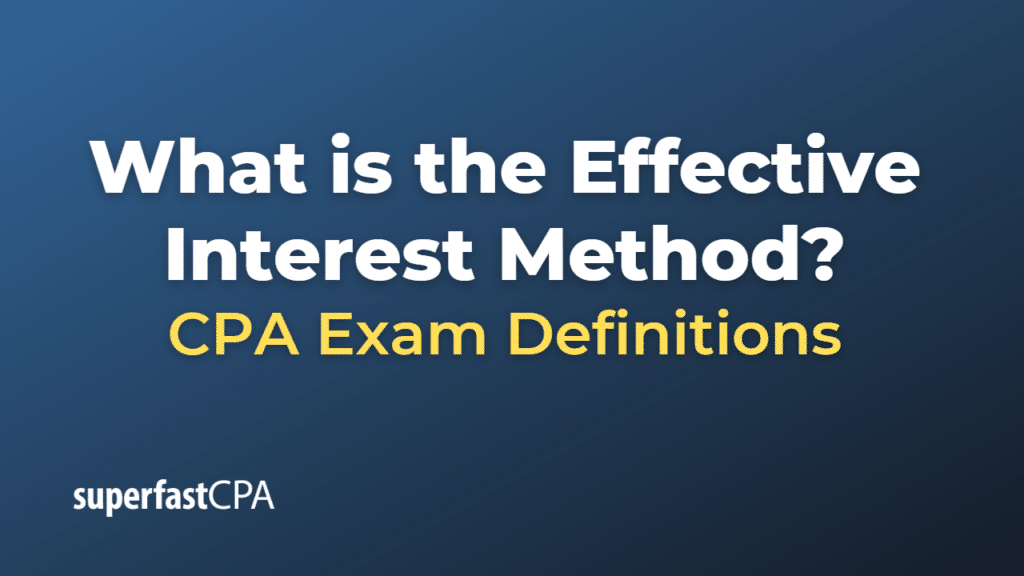Effective Interest Method
The Effective Interest Method is a method of calculating the amortized cost of a financial asset or a financial liability (like a bond or a loan) and for allocating the interest income or interest expense over a relevant period.
This method is used for long-term bonds and other similar financial instruments to evenly distribute the discount or premium over the life of the bond, which results in a more accurate interest expense or income calculation each year.
In practice, the Effective Interest Method involves the following steps:
- Calculate the effective interest rate (also known as the market rate, yield rate, or effective yield), which is the rate that exactly discounts estimated future cash payments or receipts through the expected life of the financial instrument to the net carrying amount of the financial asset or financial liability.
- Multiply the carrying amount of the financial instrument at the beginning of the period with the effective interest rate to get the interest income or expense for that period.
- Compare this calculated interest with the actual interest received or paid during the period. The difference is the amount by which the carrying value of the financial instrument increases or decreases.
- Adjust the carrying value of the financial instrument by the difference calculated in step 3.
This process is repeated for each period until the carrying value of the financial instrument equals its maturity value.
The Effective Interest Method is a standard method under International Financial Reporting Standards (IFRS) and Generally Accepted Accounting Principles (GAAP) for amortizing a bond discount or premium.
Example of the Effective Interest Method
Let’s use a bond as an example to demonstrate the effective interest method.
Suppose that a company issues a 5-year, $100,000 bond with a stated interest rate of 5%, paid annually. However, the market interest rate at the time of issue is 6%. This difference between the stated rate and the market rate means that the bond will actually be issued at a discount to its face value.
To calculate the issuance price of the bond (the price investors are actually willing to pay), we would discount the bond’s future cash flows (both the annual interest payments and the principal repayment at maturity) by the market interest rate of 6%.
Let’s say that after performing this calculation, we determine that the bond is issued for $96,000. This is the bond’s initial carrying amount.
Now, we would use the effective interest method to amortize the bond discount over the life of the bond:
- In the first year, the interest expense is calculated as the carrying amount at the beginning of the period times the market interest rate: $96,000 * 6% = $5,760. This is the amount of interest expense we would report on the income statement.
- The cash interest paid to bondholders is the face value of the bond times the stated interest rate: $100,000 * 5% = $5,000.
- The difference between the interest expense and the cash interest paid is the amount by which we increase the carrying value of the bond: $5,760 – $5,000 = $760. We add this to the bond’s carrying value, so at the end of the first year, the carrying value is $96,760.
This process would be repeated each year for the life of the bond, with the carrying value gradually increasing each year until it reaches the bond’s face value of $100,000 at maturity.
Note that this example is a simplification, and actual calculations might be more complex due to factors like semiannual interest payments or other bond features. Always consult with a qualified financial professional when dealing with these kinds of financial instruments.













